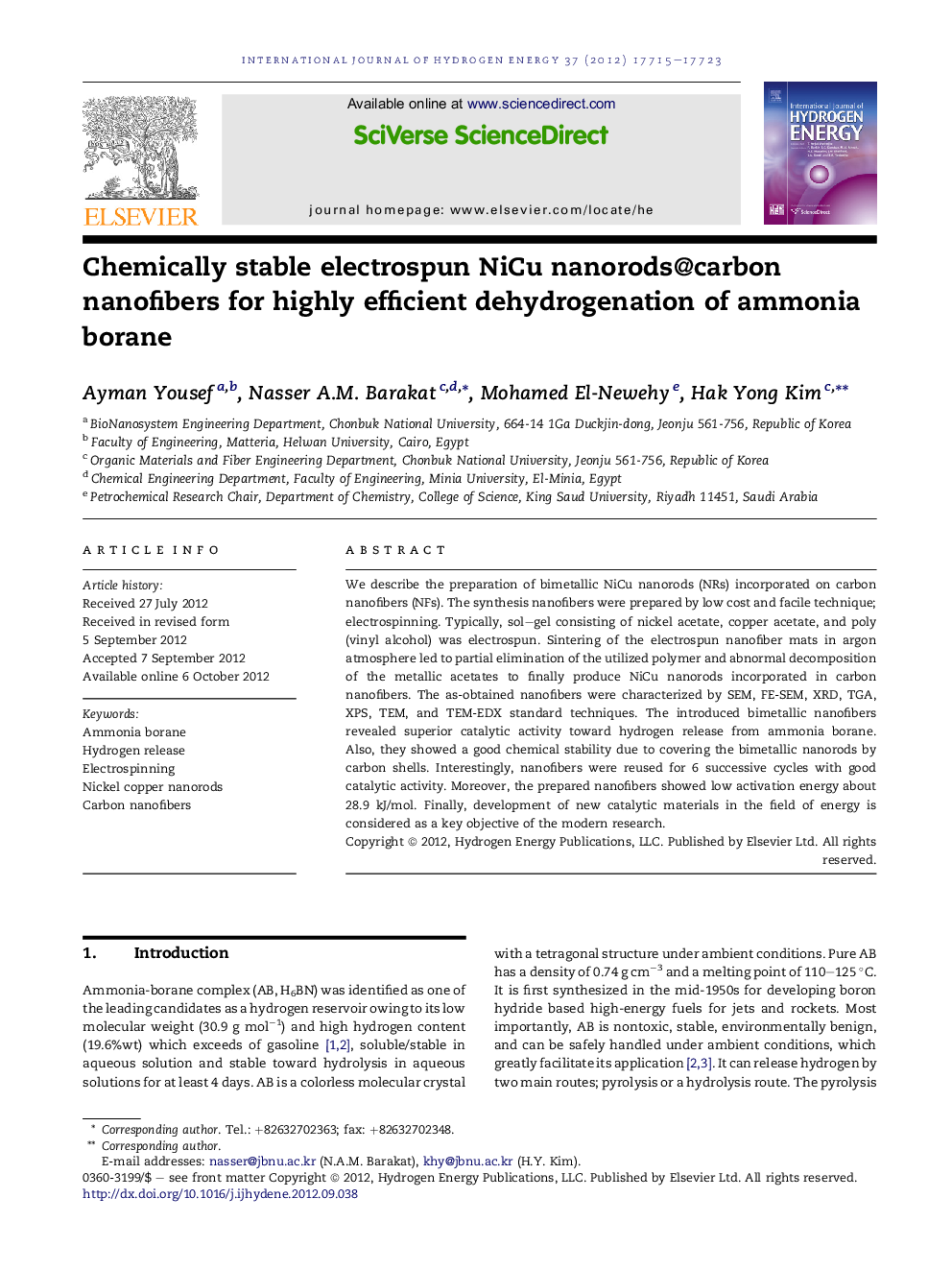| Article ID | Journal | Published Year | Pages | File Type |
|---|---|---|---|---|
| 1278288 | International Journal of Hydrogen Energy | 2012 | 9 Pages |
We describe the preparation of bimetallic NiCu nanorods (NRs) incorporated on carbon nanofibers (NFs). The synthesis nanofibers were prepared by low cost and facile technique; electrospinning. Typically, sol–gel consisting of nickel acetate, copper acetate, and poly (vinyl alcohol) was electrospun. Sintering of the electrospun nanofiber mats in argon atmosphere led to partial elimination of the utilized polymer and abnormal decomposition of the metallic acetates to finally produce NiCu nanorods incorporated in carbon nanofibers. The as-obtained nanofibers were characterized by SEM, FE-SEM, XRD, TGA, XPS, TEM, and TEM-EDX standard techniques. The introduced bimetallic nanofibers revealed superior catalytic activity toward hydrogen release from ammonia borane. Also, they showed a good chemical stability due to covering the bimetallic nanorods by carbon shells. Interestingly, nanofibers were reused for 6 successive cycles with good catalytic activity. Moreover, the prepared nanofibers showed low activation energy about 28.9 kJ/mol. Finally, development of new catalytic materials in the field of energy is considered as a key objective of the modern research.
▶ NiCu nanorods@cabon nanofibers were synthesized by simple and effective technique. ▶ The high amount of hydrogen was released by catalytic nanofibers at room temperature. ▶ The introduced nanofibers showed good chemical stability for 6 cycles. ▶ The prepared nanofibers revealed lower activation energy. ▶ This is considered a cheap, stable, and effective material for AB hydrolysis.
